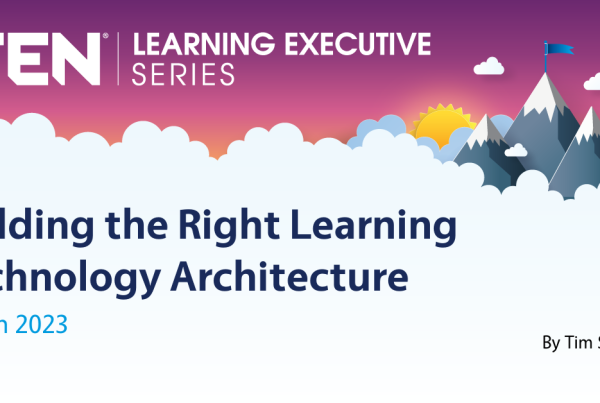
The two significant outcomes of learning & development (L&D) organizations are increasing the knowledge and improving the skill of its participants. The currency that learners pay for these outcomes is their attention, which has been a highly-valued commodity ever since stall merchants competed for it by calling out at market to sell their goods.
Today, our attention is demanded by the screens that we work and play on, advertising designed to prey on our deepest fears and dreams, and of course, the really important things like family, friends, walking the dog – you know, reality. Combine this well-crafted assault on our attention and our obligations to reality and it’s no wonder that when you see the data on the meager effectiveness of traditional L&D programs like leadership development, sales training and coaching, they are typically the first to have their budgets questioned.
Consider the following numbers released at a recent industry event:
- 43 percent of employees reported being bored and disengaged at work.
- 80 percent of those believe that the opportunity to learn new skills would increase their engagement.
- 45 percent of employees believe that learning offered to them in their organization is not applicable to their day-to-day.
- 94 percent of CEOs are looking to their L&D teams to drive results.
- Only 8 percent are satisfied that they are getting what they need from traditional L&D.
A Losing Battle
Clearly, there is a demand for effective learning from executives and employees. However, the results speak for themselves.
L&D organizations have embraced mobile learning and gamification as the solution to the knowledge half of the L&D value equation (knowledge + skill = value/ability) to increase effectiveness and restore learner and leader confidence. Most have approached this challenge by enabling LMS content to be accessed from any device anywhere, leveraging and curating the vast amount of learning content on the Internet through sources like TED or Lynda.com.
However, the battle for attention is ultimately lost because, frankly, the experience is boring. Getting a few badges for correctly answering questions is a pale reward compared to challenge and reward of playing Call of Duty or World of Warcraft. In her book Reality is Broken, Jane McGonigal explores why we invest 3 billions hours a week of our attention into video games. Her premise is that we should approach the design of work (and learning) the same way we design video games, with an ultimate goal, a set of rules, a timely feedback system, and voluntary participation. Within such frameworks, gamers (and learners) can experience “positive stress” throughout all types of hard work in the game. According to McGonigal, “Lots of things have the bells and whistles, but not the heart of a game.”
Traditional vs. Mobile Learning… or ?
The traditional approach is often blended learning, during which knowledge is delivered via workshops, mixed together with some “fun” ice-breakers and interaction with colleagues. There are two major challenges with workshop learning that every L&D practitioner has faced. First, we’ve all seen and understand the stats around retention of event-based learning. Learners retaining only 12 percent to 15 percent of the content is a horrible return on both our organization’s investment and the investment in attention from the learners. Second, again, workshops are usually boring. Every facilitator reading this disagrees with me, they would say that they make their sessions fun and interactive, and I agree they generally do, in fact a dynamic leader is often really the only saving grace of a workshop. It’s not the learning content that’s the problem; it’s the format. Unless your learners are all beginners at the same level of competency, they spend a large portion of time being taught concepts and processes they already understand, they become bored and could potentially miss knowledge they don’t know.
The holy grail of skill development, being good at your job, generally falls to the managers in the field. The workshop approach tries to address this, but because of the poor design of peer-to-peer roleplays and the challenge of retention, the results fall into the category of “better than nothing.” Mobile learning does not address the issue of skill development.
If we look at this challenge from a purely problem-solving standpoint, there are things that work well for each approach. The mobile learning approach has several advantages such as engaging learners when and where it’s convenient for them. The main advantage to in-person workshops is the human interaction: discussion, coaching and feedback. There is a third approach to solving this dilemma, 1:1 deliberate learning, a concept borrowed from tutoring.
“1:1 deliberate learning + practice approach can save up 50 percent of the costs of traditional workshops”
1:1 deliberate learning is at its most effective when targeted at interpersonal applications such as customer-facing sales and service, coaching, leadership, performance management, diversity and change conversations. The premise is that most learners already have some foundational knowledge of the concepts being taught. Each concept and step in the process are discussed with a facilitator (telephone or video) and then quickly practiced and evaluated in a targeted roleplay. Once the learner demonstrates an understanding of the concept, the facilitator moves on to the next part of the process.
Putting It All Together
A one or two-day coaching or sales workshop are easily adapted into one or two 1:1 deliberate learning sessions of perhaps 45 minutes each. A week later, the learner then practices the concepts in three or four 1:1 scenario-based practice sessions to hone their skills and receive feedback and coaching on how it felt to be in the conversation.
Case studies show that the costs of a 1:1 deliberate learning + practice approach can save up 50 percent of the costs of traditional workshops. Most importantly, a 1:1 interaction that challenges the learners and gives them specific feedback and coaching that is engaging and motivating. Research supports the claims of 70 percent to 80 percent retention because these sessions leverage the tenets of deliberate practice; interleaving skills, spacing, targeted measured feedback and real-time interaction.








